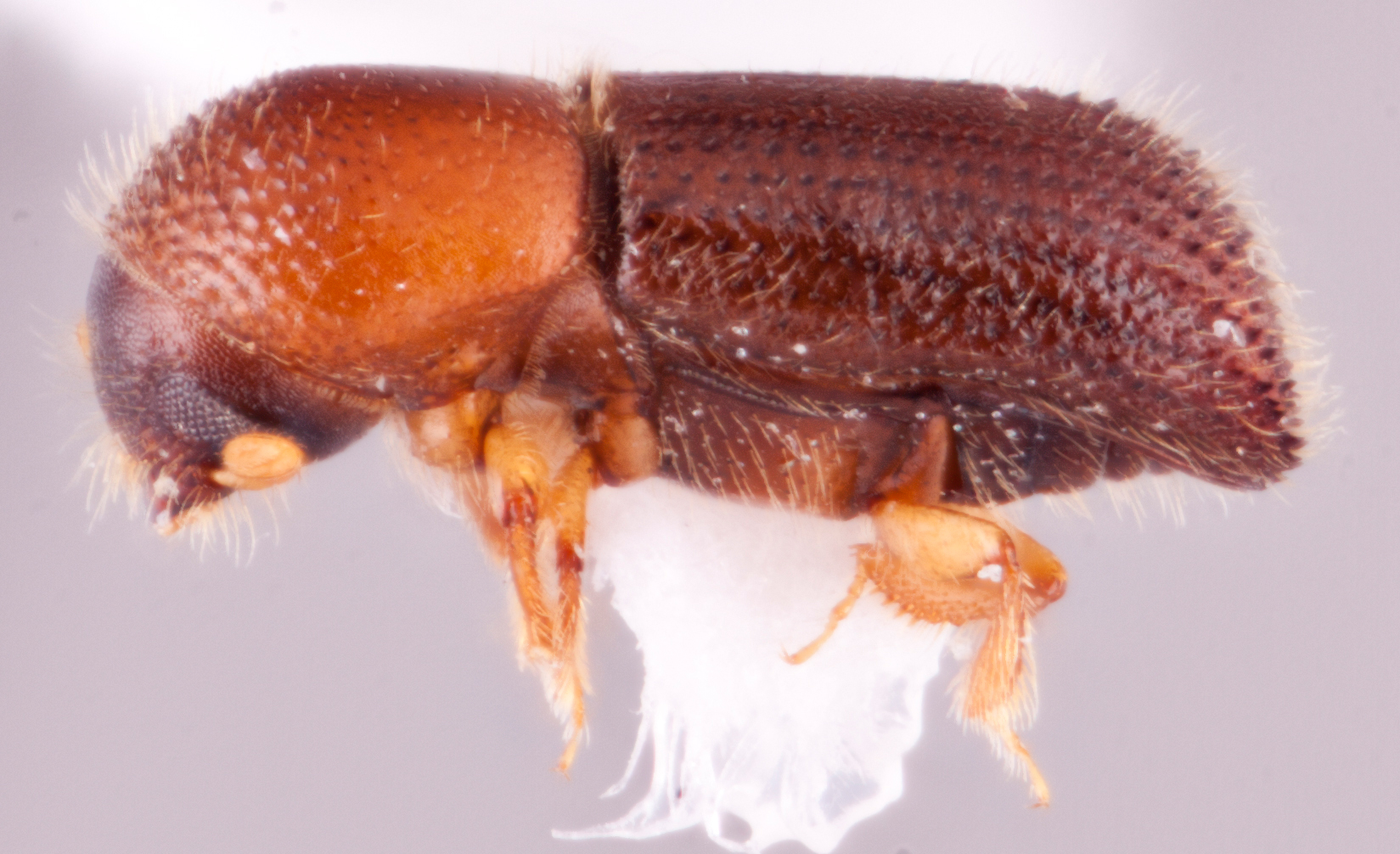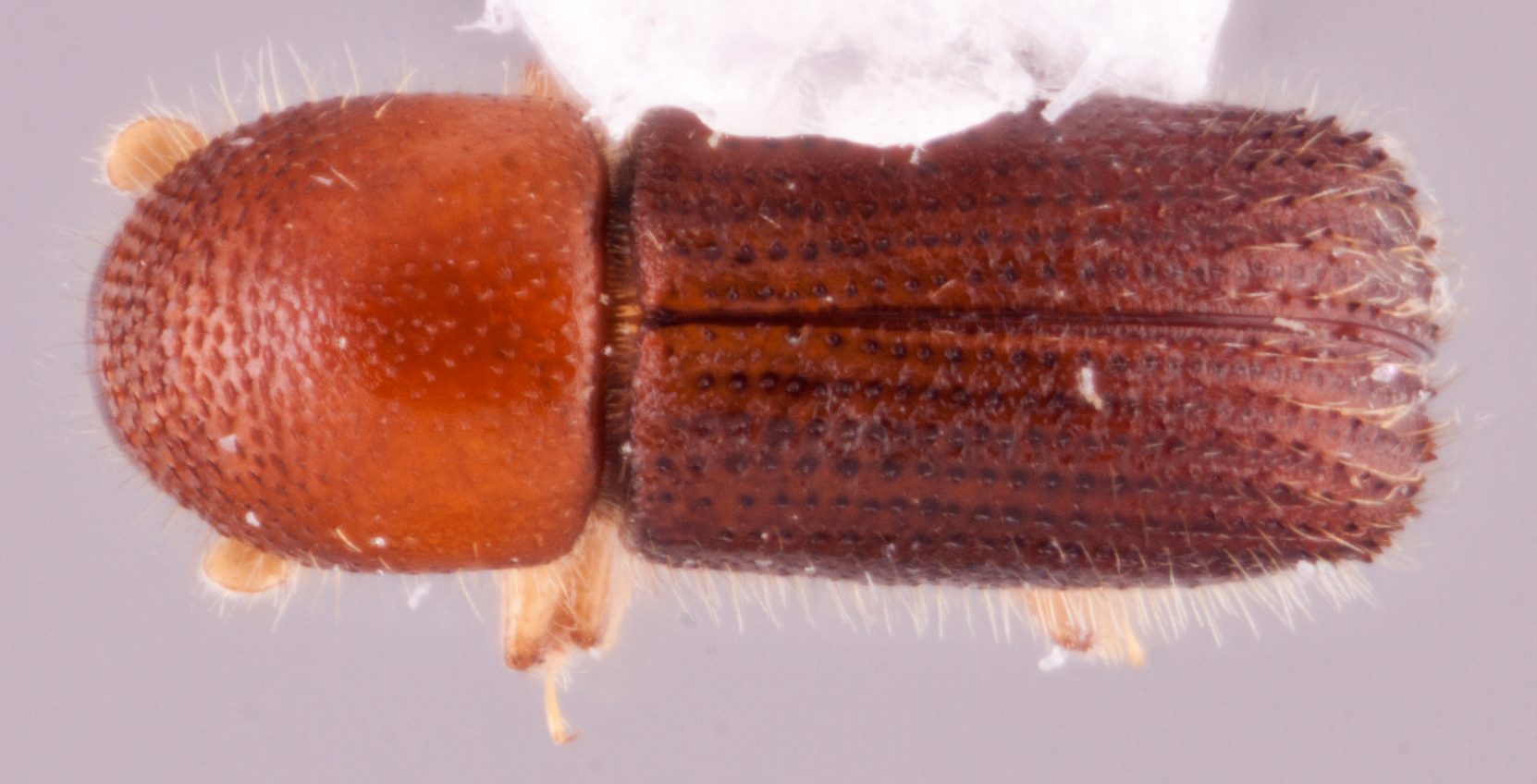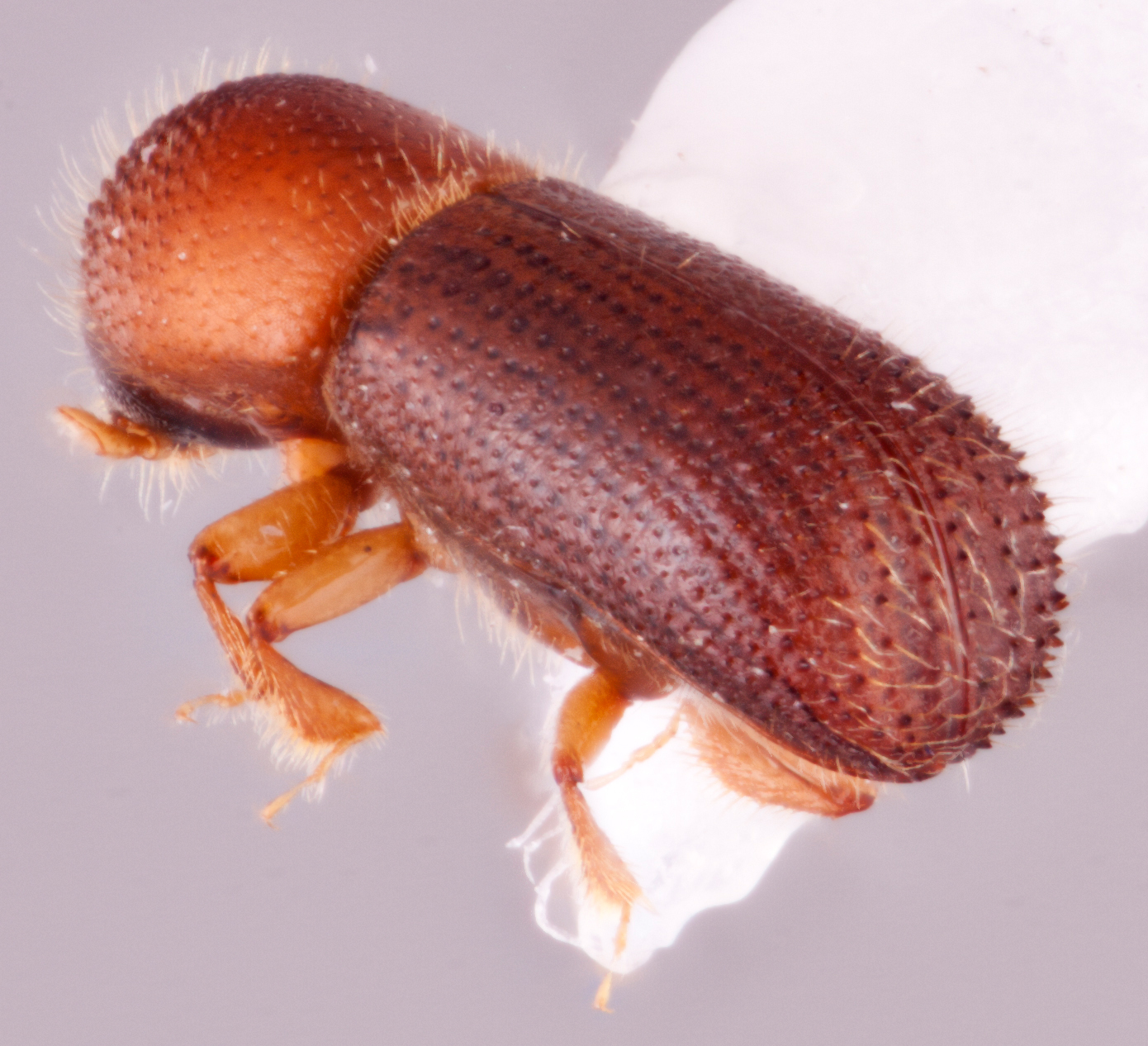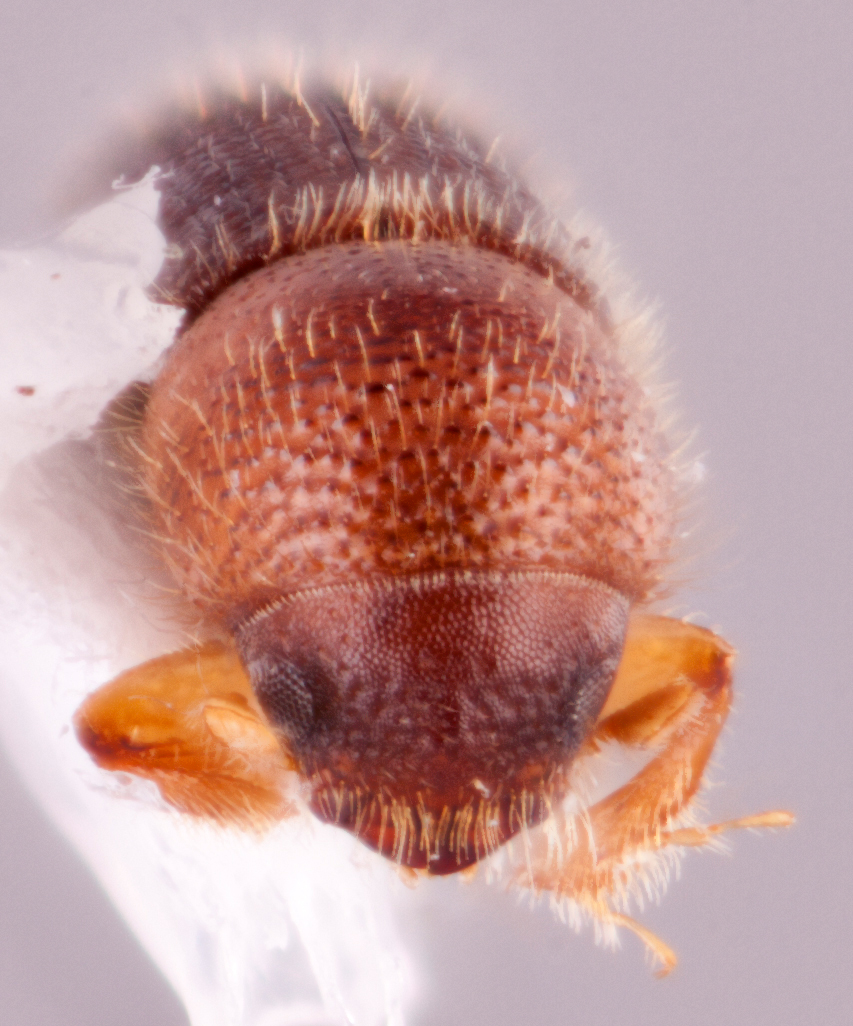Microperus perparvus
|
Microperus perparvus lateral; R.K. Osborn |
|
Microperus perparvus dorsal; R.K. Osborn |
|
Microperus perparvus declivity; R.K. Osborn |
|
Microperus perparvus frontal; R.K. Osborn |
Taxonomic history
Xyleborus perparvus Sampson, 1922: 151.
Microperus perparvus (Sampson): Maiti and Saha, 1986: 97.
Coptodryas perparva (Sampson): Wood and Bright, 1992: 826.
Synonyms
Xyleborus tsukubanus Murayama, 1954: 184. Beaver et al., 2008: 233.
Diagnosis
1.5−1.9 mm long (mean = 1.64 mm; n = 5); 2.71−2.86 times as long as wide. This species is distinguished by the elytralelytral:
pertaining to the elytra
discdisc:
the flat central upper surface of any body part (e.g. pronotum and elytra) flat with short, steep obliquely truncateobliquely truncate:
flat with short, steep obliquely truncateobliquely truncate:
nearly truncate but rounded not flat in lateral view
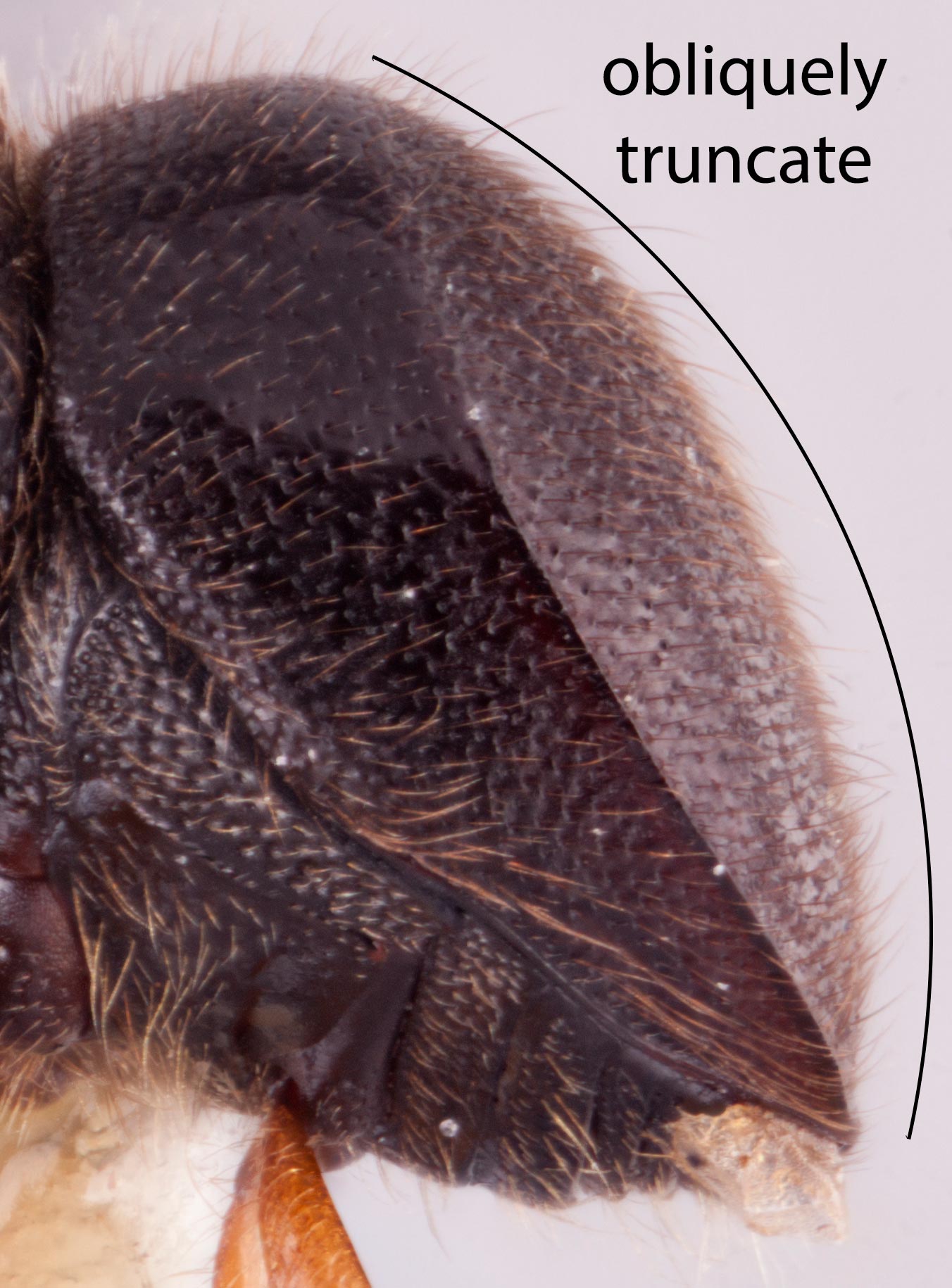 elytralelytral:
elytralelytral:
pertaining to the elytra
declivitydeclivity:
downward slope of either the pronotum or elytra
 ; posterolateralposterolateral:
; posterolateralposterolateral:
relating to end of the side part/portion
 carinacarina:
carinacarina:
an elevated ridge or keel, not necessarily high or acute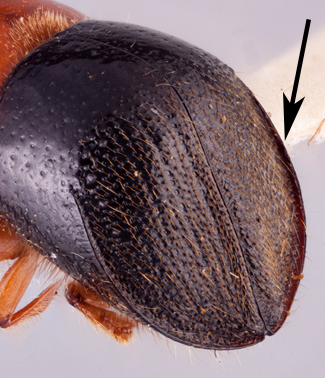 weak, denticulatedenticulate:
weak, denticulatedenticulate:
covered in denticles
; declivitaldeclivital:
pertaining to the elytral declivity
interstriae straight from basebase:
point or edge closest to the body; opposite of apex to apexapex:
to apexapex:
point or edge furthest from the body; opposite of base
 , never laterally broadened; denticlesdenticle:
, never laterally broadened; denticlesdenticle:
a small tooth, the sides of which are equal and the tip is above the middle of the base on declivitaldeclivital:
on declivitaldeclivital:
pertaining to the elytral declivity
summit denser and of equal size to those on declivitaldeclivital:
pertaining to the elytral declivity
face; declivitaldeclivital:
pertaining to the elytral declivity
face shagreenedshagreened:
covered with a closely-set roughness, like shark skin 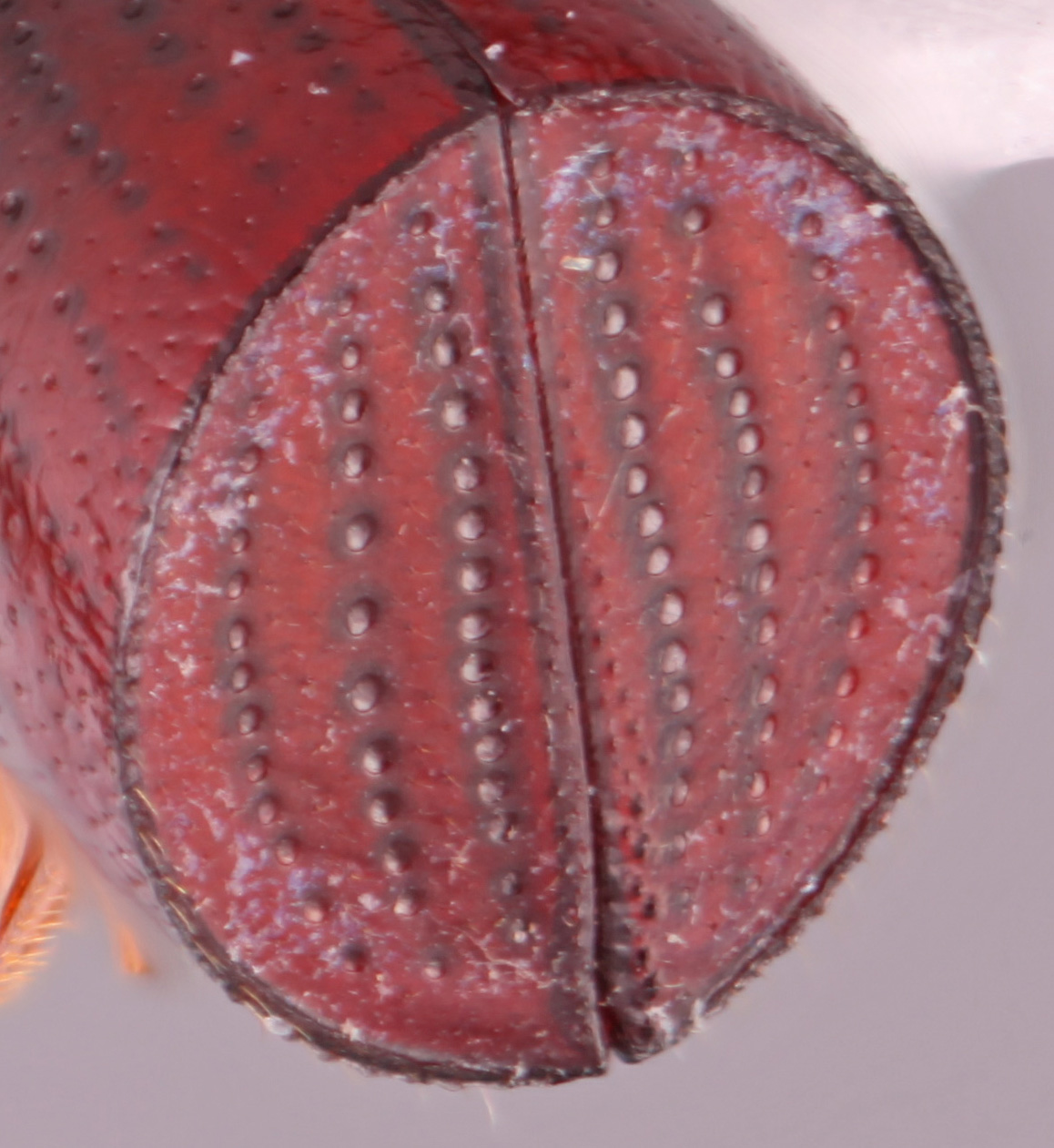 , dull.
, dull.
May be confused with
Microperus kirishimanus, M. latesalebrinus, M. molestus and M. nudibrevis
Distribution
Bangladesh, China (Fujian, Guizhou, Hong Kong, Hunan, Jiangxi, Sichuan, Xizang, Yunnan), India (Andaman Is, Assam, West Bengal), Indonesia (Ternate), Japan, East & West Malaysia, Myanmar, New Guinea, Solomon Is., Taiwan, Thailand, Vietnam
Host plants
polyphagous, possibly with some preference for Dipterocarpaceae (Beaver and Liu 2010Beaver and Liu 2010:
Beaver RA, Liu L-Y. 2010. An annotated synopsis of Taiwanese bark and ambrosia beetles, with new synonymy, new combinations and new records (Coleoptera: Curculionidae: Scolytinae). Zootaxa 2602: 1-47. https://doi.org/10.11646/zootaxa.2602.1.1)
DNA data
Sequences available for COI and CAD.
COI: MN619983
CAD: MN620257

